Many people worry about high electricity bills during the winter and are eager to find ways to save money. With shorter days and longer nights, it’s natural to spend more time at home compared to the summer months. This increase in time spent indoors often leads to greater use of heating appliances, which consume a significant amount of electricity and drive up bills.
In this article, we’ll share 9 practical tips to help you stay warm while keeping your electricity costs in check. Use these strategies to stay comfortable and save money throughout the colder months.
Village House offers many affordable properties throughout Japan, starting from ¥20,000. If you are looking for a property, please visit our website.
1. Layer your clothing

Layering is one of the most effective ways to stay warm in cold weather. When you layer light clothing, such as T-shirts, thin knits, or other lightweight tops, an insulating layer of air is trapped between the layers. This air helps retain body heat, preventing warmth from escaping and making you more resistant to the cold.
For instance, wearing a crew-neck T-shirt under a thin knit sweater or pairing a V-neck sweater with a light top can keep you warm while maintaining a casual style. The key to effective layering is not to rely on thick, bulky clothing, but rather to combine several thinner layers for better insulation.
Another important factor in staying warm is keeping the “three necks”- the neck, wrists, and ankles – protected. These areas contain major blood vessels; if they get cold, it can cause poor circulation, making the entire body feel colder. To combat this, wear a turtleneck or scarf around your neck, gloves around your wrists, and thick socks or leg warmers around your ankles to help retain heat and keep your body warm more efficiently.
2. Use thermal insulation films
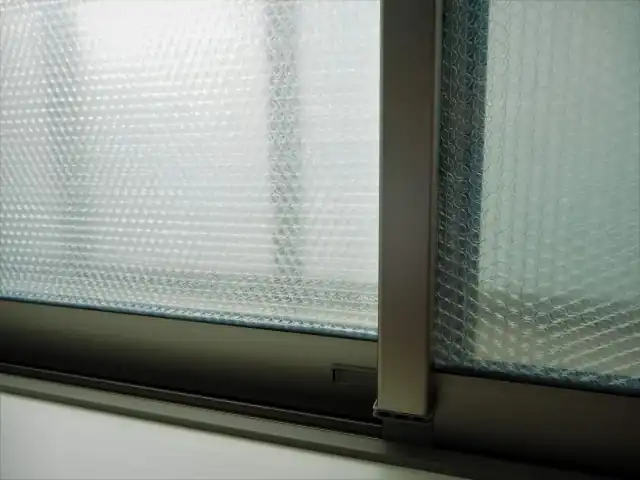
Insulating films are a simple yet effective way to improve a room’s insulation. These sheets can be applied to windows, floors, and other surfaces to help retain warm air inside and reduce the loss of heat. By doing so, they can significantly lower the electricity consumption of heating appliances, helping you save on energy bills.
While insulation films are mostly used on windows, they have become increasingly available at affordable stores like ¥100 shops. However, when purchasing, be sure to select sheets specifically designed for window glass. Using materials not intended for windows could result in scratches or damage to the glass.
In addition to insulating films, we recommend using cushioning materials to seal gaps around doors and floors. This, combined with the insulating sheets, can prevent drafts and further improve your home’s heat retention. You can also invest in special items designed to stop warm air from escaping under curtains, helping to keep your home cozy and energy efficient.
3. Use thicker and larger curtains
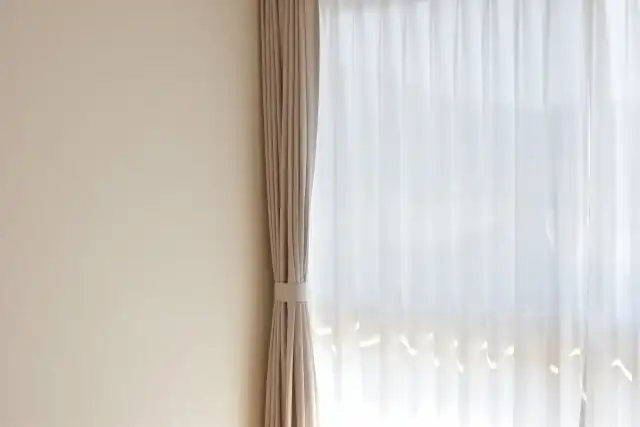
The thicker the fabric of your curtains, the better their ability to insulate and retain heat. However, it cannot be easy to gauge the thickness just by looking, so it’s a good idea to feel the fabric or check the product instructions for more details.
One effective way to protect yourself from the cold in winter is to choose curtains made from brushed materials, which are excellent at retaining heat. Consider the material, thickness, and whether the curtains include a lining to ensure maximum heat efficiency.
If you already have curtains you love but want to improve their insulation, consider adding a lining. While this may require a bit of effort, it’s a worthwhile investment for enhanced warmth. Thick curtains with linings often have limited design options, but adding a lining allows you to keep your preferred style while improving heat retention.
For optimal warmth, it’s best to use curtains that are slightly larger than the window. By covering the window more completely, you can prevent warm air from escaping. For example, even if your window is waist-high, opting for floor-length curtains will provide better protection against the cold.
If purchasing new curtains is not an option, you can easily adjust the length of your current curtains using adjuster hooks. If your curtains don’t already have them, you can buy adjuster hooks separately and install them yourself. However, remember that these hooks can typically adjust the length by a maximum of about 4 cm.
4. Make use of not only the air conditioner but also kotatsu and electric blankets
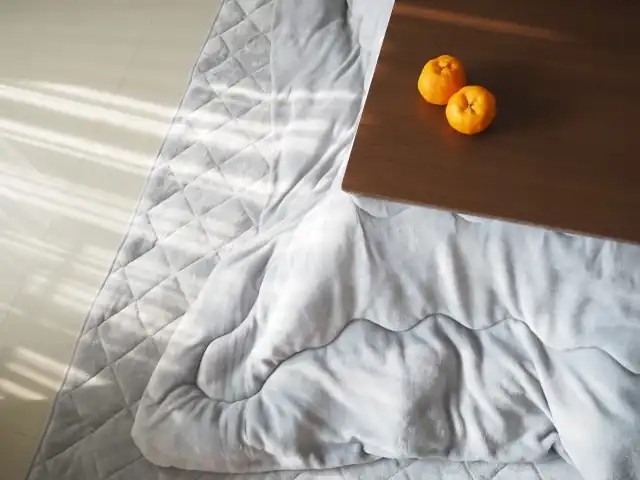
If you live alone or in a large room, consider using a kotatsu or electric blanket instead of an air conditioner or space heater. These options allow you to efficiently heat only the area you’re in, helping you stay warm while reducing electricity consumption.
In recent years, “wearable blankets” have also become a popular and convenient option. It might be worth trying out a wearable blanket or similar items to find what works best for you, depending on your needs.
5. Review the temperature setting

Even a small adjustment in the temperature setting of your heating appliances can lead to significant energy savings. For example, lowering the temperature setting of an air conditioner by just 1°C can reduce power consumption by approximately 10%. It’s also a good idea to make use of the automatic operation function.
For kotatsu and electric carpets, consider switching from the “high” setting to “medium” or “low,” or using the energy-saving mode to reduce energy use. The Ministry of the Environment recommends keeping the room temperature around 20°C during winter. You can keep your space comfortable while minimizing power consumption by reviewing and adjusting the temperature settings of your heating appliances.
Reference: Ministry of the Environment | Knowing the energy situation at home | How to use air conditioners
6. Increase the room’s humidity

Humidity plays a significant role in how we perceive temperature. When humidity increases by 30%, the temperature can feel 2 to 3 degrees warmer, especially at the tips of your hands and feet. Therefore, by maintaining a moderate level of humidity in your room, you can feel warmer and potentially lower the temperature setting on your heating appliance.
Humidifiers are also more energy-efficient compared to air conditioners and heaters, as they consume less power. Using a humidifier to adjust the perceived temperature can help you stay comfortable while saving energy, offering a more efficient alternative to simply raising the room temperature with heating appliances.
7. Use a circulator in combination with heating
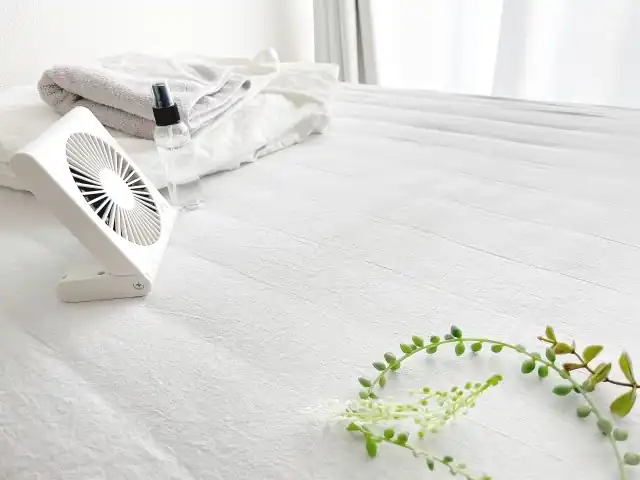
By using an air circulator or air purifier to circulate the warm air from your air conditioner, you can heat the entire room more efficiently without increasing the temperature setting. Placing the air circulator diagonally across from the air conditioner helps distribute the warm air more effectively throughout space.
For example, if you have two connected rooms and only one has an air conditioner, place the air circulator in the center of the room with the air conditioner, and set it to face upwards. This will direct the warm air toward the ceiling, allowing it to circulate more easily into the adjacent room, helping to maintain an even temperature without the need for additional heating.
8. Clean the air conditioner’s filter regularly

It’s recommended to clean your air conditioner filter once or twice a month, especially if it’s used daily. Over time, dirt accumulates in the filter, reducing the heating efficiency. Regularly cleaning the filter can help you save approximately 990¥ in heating costs, compared to using a clogged air conditioner (2.2 kW).
In addition, air conditioners that are used for extended periods can accumulate dust and dirt inside, which can further decrease their performance. However, cleaning the internal components of the air conditioner requires expertise, and attempting it without proper knowledge may lead to damage or breakdowns. To ensure thorough and safe cleaning, it’s advisable to hire a professional cleaning service to handle the task.
9. Review your electricity provider’s plan
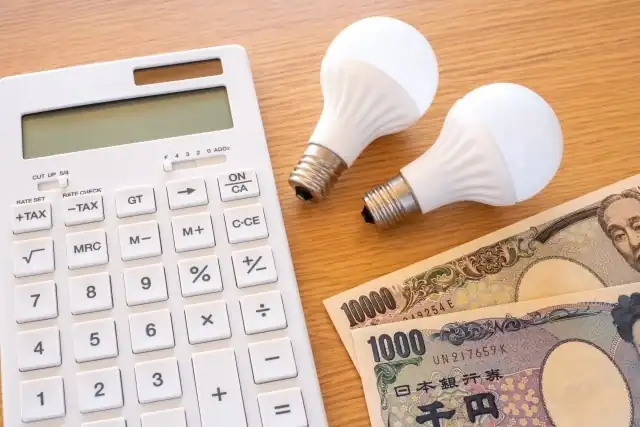
In recent years, the liberalization of the electricity market for households has made it easier to switch to an electricity provider that suits your needs. If you choose a service offered by your smartphone carrier or credit card company, you might be able to earn points or receive discounts on your bill.
Additionally, you can often save money by reviewing and adjusting the plan with your current electricity provider. It’s worth checking your current plan to see if there are more cost-effective options available, helping you reduce your electricity expenses without switching providers.
At Village House, there is no need to pay a deposit, key money, renewal fee, or handling fee (*). If you want to save on initial costs, please feel free to contact us.
*A deposit may be required depending on the contract contents and screening results.
Related articles:
- Is Living Alone on a Monthly Income of 120,000 Yen Possible? Estimated Living Expenses and Tips for Saving Money
- 5 Items That Will Keep You Warm and Cozy This Winter
- Want to Move but Can’t Afford the Initial Costs? Here’s What You Can Do!

Hello, I’m Machiko Doi, a freelance writer who writes about housing and living in Japan.
I live in an 80-year-old house that I inherited from my grandparents along with my two shelter cats and daughter.
We live a relaxed life while repairing the house.
I like to cook vegetables from the garden and fresh fish caught by my father, and enjoy them with cold beer on a hot day or hot sake on a cold day.



